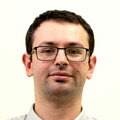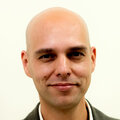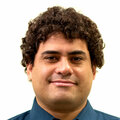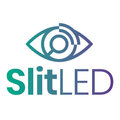
SlitLED
57% of funding target
Highlights
Highlights
Technological breakthrough for a global problem, increased relevance for mitigation of diseases like Coronavirus
As eye physicians have a high risk of getting infected by the Coronavirus, the demand of Telemedicine solutions for ophthalmic examination is escalating.
The number of eye physicians available worldwide is insufficient to meet the needs of the growing global population requiring eye examinations. The uneven geographical distribution of eye physicians, ophthalmologists and doctors of optometry only worsens the problem, leaving millions of people worldwide with limited to no access to professional care. This issue was recently amplified by global travel restrictions enforced to slow-down the advancement of Coronavirus.
As a result, even in developed countries such as the U.S. – tens of millions of people suffer from low access to eye physicians. This leaves common, yet treatable ophthalmic diseases under-diagnosed and untreated, leading to visual impairment with associated costs of tens of billions of dollars to the American economy annually.
SlitLED’s product is a technological breakthrough, enabling eye physicians to perform a live, comprehensive clinical diagnosis using innovative ophthalmic Telemedicine technology.
A significant, constantly-growing market
SlitLED operates within the Telemedicine field, which is estimated to be worth tens of billions of dollars and is expected to grow drastically in the near future.
.png)
Moreover, both Teleophthalmology and Teleoptometry belongs to the fastest growing domains in the field of MedTech, due to aging population in developed countries and the rise of diabetes and vascular diseases in the population, leading to irreversible eye damage which raises the need for constant monitoring.
This field is highly regarded by international firms and Venture Capital funds, exemplified by the Israeli startup 6Over6, which was recently purchased for over $100M.

Unique technology and two registered patents owned by SlitLED
SlitLED is developing a unique technological product, enabling doctors to perform detailed eye examinations on distant patients as they were standing before him. SlitLED is the first company to overcome a variety of technological challenges that prevented such capabilities in the past.
The company’s technology is patent approved in the U.S., granting SlitLED exclusive ownership over such its unique technological solution. The company has already developed a system able to demonstrate the required technological concept for distant inspection.
Increased assistance grant from the Israeli Innovation Authority - independent publicly funded agency
SlitLED was approved for the Early Stage Companies Incentive Program (ESCIP) by the Israeli Innovation Authority, along with an increased assistance grant. Given a complementary funding, this significant amount is an equity-free grant. The company was authorized after undergoing a thorough and comprehensive verification process, conducted by the Authority’s officials, providing a positive signal to investors.
 |
A team of medical and technological experts
SlitLED was founded by experts in ophthalmology, hardware and software engineering, having the unique knowledge and experience for the development of such a system. The SlitLED team is backed by world-class consultants, assisting the company with scientific and clinical challenges as well as providing valuable connections and insights to relevant markets.

The company is an alumnus of two acceleration programs: MedTech Ra’anana – an accelerator specifically aimed to the development of medical devices; and BizTec – the Technion’s technological entrepreneurship program.
 |
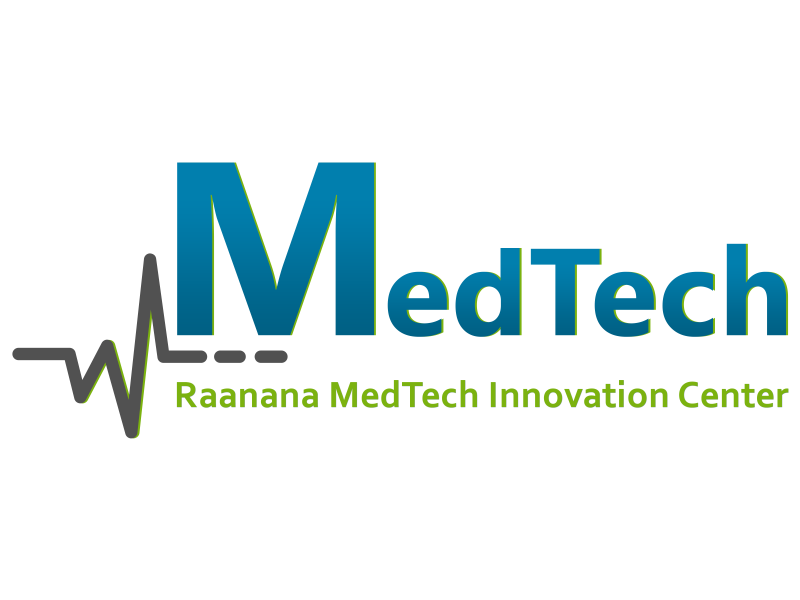 |
Pitch
Pitch
Access to medicine is one of the most substantial issues in the medical field, ophthalmology included. In many areas worldwide – Including developed countries – the accessibility to eye physicians is extremely low, as many of them operate mostly in large urban centers. For example, according to official data approximately 75M people suffer from limited access to medical services in the U.S. alone. This lack of accessibility leads to late diagnosis of eye diseases, to visual impairment and even blindness, mostly preventable if diagnosed on time. Moreover, this lack of accessible ophthalmic services makes the post-surgical checkups extremely difficult.
Such diagnoses are performed today with a slit lamp, the main examination tool used by eye physicians. This tool is used to examine all parts of the eye, using a slit of light and microscopic inspection. This tool was invented over 100 years ago, and every diagnosis requires a physical appointment made by the patients arriving at the clinic.
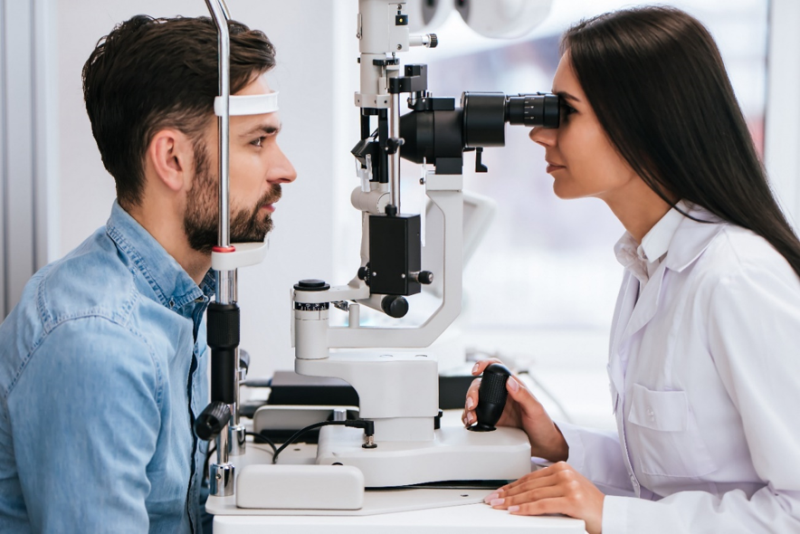
The solution
For the first time SlitLED is developing a unique system that enables eye physicians to perform a full examination of the entire eye of from a distance, in real-time and fully controlled by the physician as if the patient was present at the clinic.

SlitLED’s system is a splitting the traditional slit lamp into two separate units: the physician’s unit and the patient’s unit.
The physician’s unit will be placed in their clinic and will allow the physician full control of the patients’ unit. The patient’s unit will be located at a service point such as a local clinic or an optometry store near their place of residence. There, a local staff member will assist in all preparations required for the distant examination.
During the examination, the physician can operate and manipulate the patient’s unit dynamically, while holding a face-to-face video call, thus fully controlling the examination and supplying the patient with a clinical diagnosis as if they were both at the eye physician’s clinic.
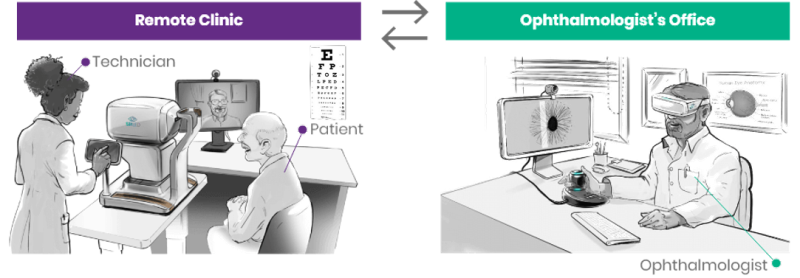
The company’s technology
Thanks to its unique technology, SlitLED leads ophthalmology to the 21st century, while allowing eye physicians to perform the “traditional” eye test at a distance, professionally and credibly as they would in their clinic.
Previous attempts and studies aimed at creating a remotely-controlled slit lamp have failed to provide a commercial tool due to significant technological limitations that remained unresolved – until SlitLED overcame them!
Let’s illustrate one of these limitations, and SlitlLED’s solution:
The physician tries to aim the ray of light at a desired spot in the distant patient’s eye, but he is unable to do so since the patient’s eye moves faster than the latencies caused by communication and motor movement delays in the remote device.
SlitLED’s patent-approved technology
Completely bypasses the issue by projecting multiple slits of light simultaneously and collecting complete image of the eye. This image is then separated by image processing into multiple images, each containing a single slit of light. These images can be navigated by the physician, allowing dynamically scanning all the parts of the patient’s eye – similar to the “traditional” work with the slit lamp and providing at least the same quality of examination.
This technology is unique as it allows the physician to perform the eye examination without any latency, despite the great distance between the patient and the physician.
SlitLED has developed a system proving the company’s concept for distant examination is indeed working. It was highly endorsed by leading ophthalmologists in Israel and in the U.S.
Moreover, an optical design of the patient’s device was made, which applies to the patent and to other clinical-technological solutions.

The Product’s advantages
- Preventing infection risk - Eliminating the need for a physical interaction between the physician and the patient, preventing the risk of infections such as the latest Coronavirus epidemic.
- Distant examinations – SlitLED’s system solves a critical issue in nowadays ophthalmology, tackling health disparities between communities.
- Complete control by the physician – Thanks to the technology of SlitLED, the examination is simple and therefore every technician or any other assistant, after receiving training, can assist the remote eye physician. Thus, the physician would be able to gain a complete control over the patient’s unit and work with complete medical confidence.
- Improved patient’s cooperation – As a result of the very short illumination duration, the patient will find it easier to cooperate compared to the traditional slit lamp examination.
- Better physician-patient trust – Due to the bidirectional and real time tele-conference, the physician is able to control the examination procedure according to the patient’s complaints. The patient is confident in the examination procedure and can receive explanations regarding the findings and the required treatment.
- Minimizing physician’s travel – The eye-physician is able to conduct examinations from anywhere, thus saving time on traveling between different clinics. The on-call senior physician may advice the duty resident, even from home at late hours.
- High-resolution examination for clinical improvement – As a result of the high separation ability of the system, it allows identifying diseases more accurately and reliably compared to ordinary check-ups.
- Medical visual documentation – SlitLED’s unique technology offers digital and visual documentation of the tests via the company’s servers, thus allowing advanced and sophisticated monitoring of different test results and track medical changes.
- Integration of Artificial Intelligence (AI) and Machine Learning (ML) – Since the information is stored on the cloud along with the physician’s diagnosis, the system enables the integration of advanced learning capabilities and additional improvements in eye tests.
Team
Team
|
Received his MD from Ben Gurion University. Dr Halevy is an expert ophthalmologist and surgeon with over 30 years of experience in all types of laser treatments and cataract surgery, both in public and private service. Dr. Halevy co-founded SlitLED upon identifying the difficulties involved in remote examination using the tools currently available. He strives to create the tools to allow a remote ophthalmic examination with the same capabilities and quality that would be achievable if the patient were present in the same room. As SlitLED‘s Chief Medical Officer, Dr Halevy guides SlitLED’s product development to create a product to ideally serve the needs of both the ophthalmologist and patients in the best way possible. Dr Halevy also guides the company’s clinical department with the understanding of both the current medical requirements and possible future developments.
|
|
Holds a B.Sc. in Mechanical Engineering from the Polytechnic Institute, Kursk, Russia, and an M.Sc. in Electronics and Automation from the Polytechnic Institute Kiev, Ukraine. Dan is a hardware engineer with formidable experience in multiple fields, including board design, electromechanics and microscopy, his experience includes leading and managing the hardware and manufacturing teams. Dan has extensive experience in the fields relevant to SlitLED’s development and has acquired a deep understanding of these fields. Dan Combines his hands-on experience in all those fields in order to lead the technological department to develop the product the company is aiming for.
|
|
Marco is responsible for the company’s marketing, business development and representation. Marco holds a degree in life sciences from the Tel Aviv University. In addition to growing up in a family closely related to ophthalmology, Marco has previous experience in marketing and project management in the ophthalmic-pharmaceutical field.
|
|
Gal is a C++ programmer at SlitLED. Graduated from the Technion Institute with a degree in computer science. As a robotics enthusiast, Gal is dealing with integration to hardware devices such as Cameras and Projectors. Gal has previous experience from Intel. He served in the Israeli navy.
|
|
Professor Ribak is an expert in astrophysics and adaptive optics. He is a researcher and lecturer at the Technion. He is credited with more than 200 scientific publications including 25 that are directly related to ophthalmology. In addition to being on SlitLED‘s advisory board, Professor Ribak is the inventor of SlitLED‘s multi-slit patent that provides the technical capabilities for remote ophthalmic examinations.
|
|
Professor Garzozi is the former head of the ophthalmic departments of the medical centers of “Haemek” in Afula and “Bnai Zion” in Haifa. Being a researcher of anterior segment laser, biometry and optic nerve blood flow, he has published more than 90 ophthalmic articles. Professor Garzozi is also a consultant to the WHO for developing countries, senior member of the American Ophthalmic Academy and an active member of ARVO. As a very experienced ophthalmologist and researcher, he guides SlitLED on the main clinical issues of the development of our product.
|
|
Prof. Ehud Assia was the Director of the Department of Ophthalmology at the Meir Medical Center, Kfar-Saba for over 20 years, where he serves as the Director of the Center for Applied Eye Research. Dr. Assia is a tenured professor at the Tel-Aviv University and was the Director of the Department of Ophthalmology of the Sackler School of Medicine. He published over 150 peer-reviewed papers the leading professional journals and over 50 publications and 25 chapters in books. Dr Assia developed several original patented devices and instruments. He is a member of the Cataract Clinical Committee of the ASCRS. Prof Assia is also the Medical Director of the Ein Tal Eye Center.
Prof. Assia will guide and assist the company in the clinical studies required by the regulatory bodies.
|
|
Dr. Schechter is a Director of cornea and cataract service at “Florida Eye Microsurgical Institute”. He is author of 20 peer-reviewed articles in addition to the membership at the editorial board of “Advanced Ocular Care” and reviewer at several leading ophthalmic journals. Dr. Schechter is also a consultant and KOL at several companies including Johnson & Johnson surgical, Bausch and Lomb, Sun Pharmaceuticals and Member of the board for Innovation Pharmaceuticals. As a KOL with deep understanding of the target market, he will guide and assist SlitLED in various U.S. market and product-related matters.
|
